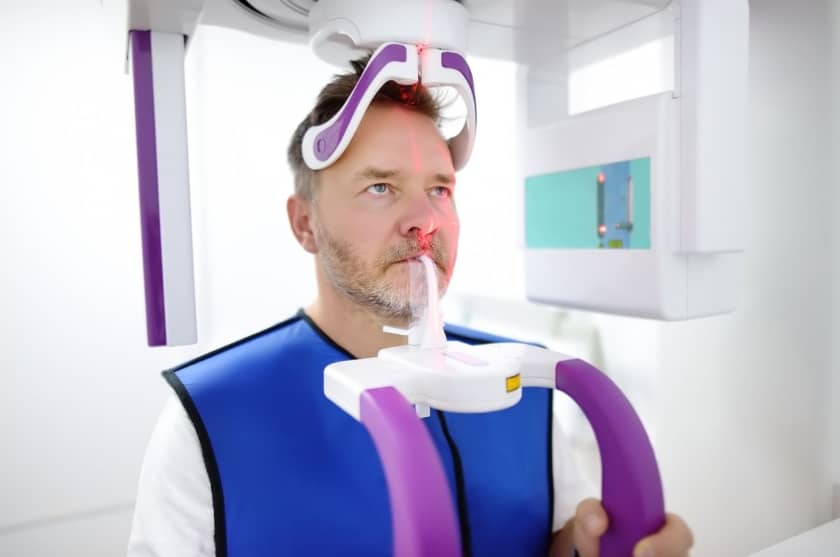
It’s estimated that somewhere between 80 and 90% of dental practices now use digital tools in their everyday practice, and approximately 1 in 5 are “technology-ready”, embracing AI in some form or another. It’s a shift that reflects not only advances in dental technology but changing expectations from patients themselves.
For dental practices, the substantial investment in these technologies is far from trivial. But the benefits, both in patient experience and clinical outcomes, are proving well worth the cost. And for patients, the transformation is already tangible: smoother appointments, more accurate treatments, and in many cases, fewer visits.
A Different Kind of Dental Appointment
Modern dental care looks and feels very different from even a decade ago. Perhaps the most immediately noticeable change is the absence of traditional dental impressions. Instead of biting into a tray of alginate, patients are now more likely to experience a quick and comfortable scan using an intraoral scanner, a handheld device that creates detailed 3D images of the teeth and gums in real-time.
These scans are not only more comfortable for patients but are often more accurate. They can be used to create crowns, veneers, aligners, and retainers with exceptional fit, reducing the likelihood of remakes or adjustment appointments. The digital files also integrate seamlessly with treatment planning software and lab systems, streamlining the entire process.
Same-Day Restorations and CAD/CAM Efficiency
Probably one of the most significant developments in digital dentistry is the integration of CAD/CAM technology (Computer-Aided Design and Manufacturing). This allows dentists to design and produce restorations such as crowns or onlays in-house, often within a single visit.
This is a far cry from even a decade ago, when dentists relied on external dental laboratories, taking days or weeks to return a completed crown. CAD/CAM systems mill restorations on-site, using the patient’s digital scan to create a precise, custom-fitted result. For patients, this means fewer appointments, no temporary crowns, and faster overall treatment.
According to one article in Dental Economics, CAD/CAM equipment like CEREC can reduce overall treatment time by more than 50%, while still maintaining excellent aesthetic and functional outcomes. For patients, and indeed dentists, that has to be a win/win situation!
Artificial Intelligence and Early Detection
While some elements of digital dentistry are highly visible, others work quietly in the background. Artificial intelligence (AI) is increasingly being used in diagnostic software to support early detection of caries, bone loss, and other oral health concerns.
AI systems are trained to analyse radiographs and identify subtle patterns or changes that may be difficult for the human eye to detect. This doesn’t replace the expertise of a trained clinician, but it can enhance diagnostic accuracy and consistency, particularly in practices that manage large volumes of patient data.
One study published in The Journal of Dental Research showed that AI-supported diagnostics improved early cavity detection rates by up to 20%, potentially reducing the need for more invasive interventions later on.
3D Printing: Custom Care at Speed
3D printing is also becoming a valuable tool in the digital dentistry workflow. Many practices now use in-office 3D printers to produce models, surgical guides, splints, temporary crowns, and even aligners with a high degree of customisation.
Using the data from a patient’s intraoral scan, dental professionals can quickly print devices tailored to individual needs, often within a few hours. This not only speeds up treatment delivery but also reduces reliance on third-party labs, giving practices greater control over timing and quality.
Why Digital Dentistry Matters to Patients
For patients, the benefits are clear:
- Shorter and more comfortable appointments
- More accurate and personalised treatments
- Reduced need for repeat visits or adjustments
- Enhanced ability to visualise treatment plans and outcomes
- A generally more streamlined, modern experience
And because digital records are easier to store, share, and track, your overall care can be better coordinated across time and between providers.
What to Ask at Your Next Appointment
While not all dental practices have adopted digital tools to the same extent, the trend is growing quickly. If you’re curious about the technologies your own dentist uses, don’t hesitate to ask. Most practitioners will be happy to explain their process and how it benefits your care.
Questions you might consider asking:
- Do you use digital scanning for impressions?
- Is same-day treatment available?
- Are AI tools used to support diagnosis?
- Do you use 3D printing in-house?
Even a simple conversation about these topics can help you feel more informed and engaged in your dental care.
Final Thoughts (and a word from Dental Dale)
Digital dentistry is more than just a shift in tools, it’s a transformation in how dental care is delivered. With shorter treatment times, better diagnostic precision, and improved patient comfort, it’s changing both the experience and the outcomes for patients across the board.
And if you’re a dental professional looking to communicate these changes to your audience with clarity and confidence, I can help. I’m Dale, founder of DentalDale.com, and I specialise in creating accurate, engaging content for dental practices and professionals.
If you need blog articles, patient guides, website copy or something more technical that connects with your readers and reflects your expertise, get in touch with me here. I’d love to help you tell your story.